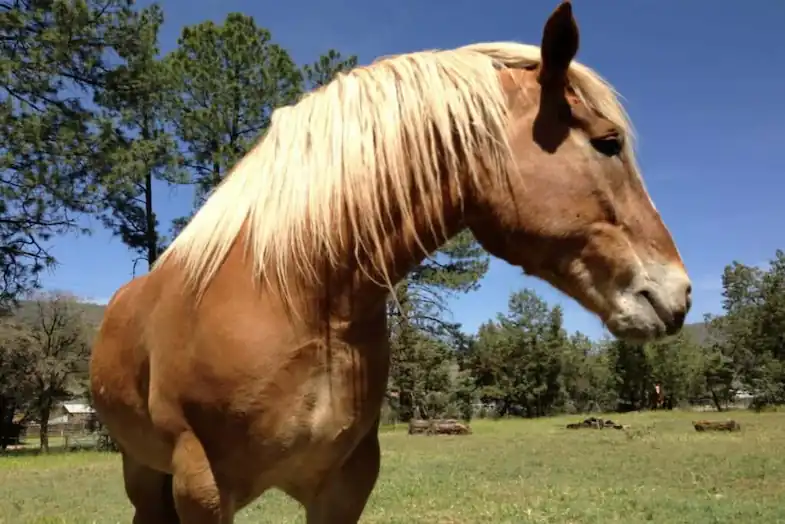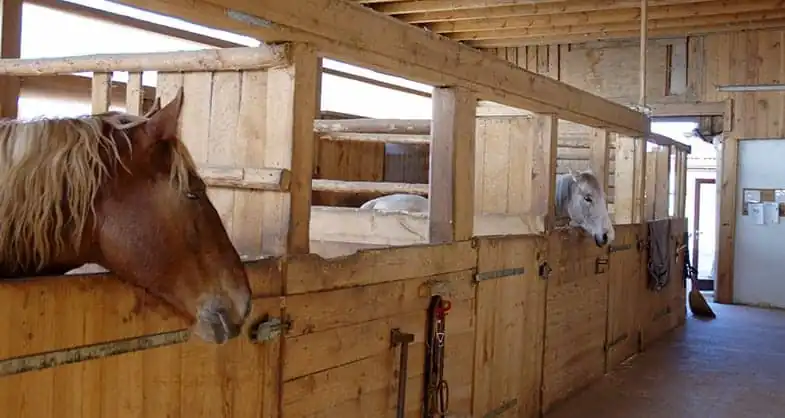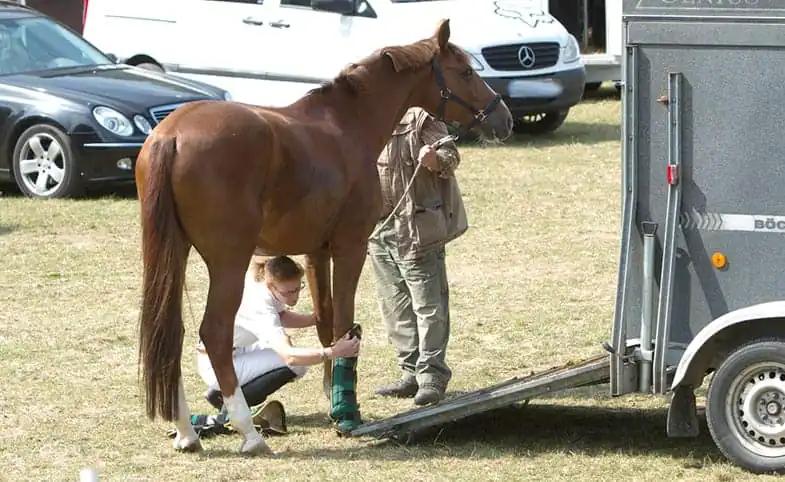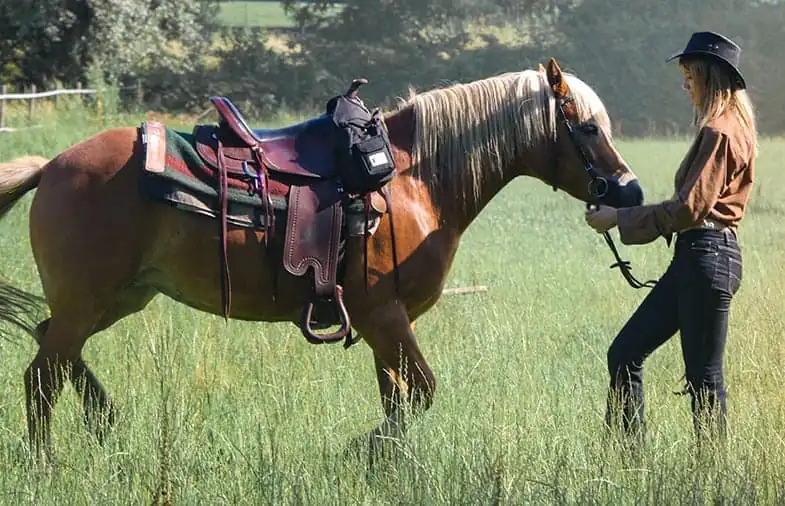My nephew has recently been bombarding me with phone calls, asking for advice. You see he’s been riding for a few years now and has decided he’s ready for his first horse. The problem is his parents aren’t particularly horsey-minded so aren’t able to help him which is where I come in. It took a while for him to find the perfect horse but as soon as he did he realized he didn’t really know what to do next. I figured that he probably wasn’t the only new owner in this situation so decided to write this article to help those new owners (and soon-to-be owners).
What do I do now that I’ve bought a horse? Once you’ve found your perfect horse you’ll need to make sure your new horse is happy, healthy, and safe. This will involve finding a suitable place to keep them, making sure they have enough exercise as well as the right food. You’ll also need to make sure your horse feels safe and secure from predators.
Before your new horse arrives
Once you’ve finally found the right horse, waiting for it to arrive can be so difficult and can seem like it’s taking forever but don’t worry the day will soon come, and besides you’ve still got plenty to do.
Last minute questions
While you should have asked the seller all of the crucial questions before you committed to buying the horse it’s easy to forget some things, but there’s no time like the present. You might not have thought they were relevant at the time but there are some important questions you need the answers to before the big day.
- What size does the horse need? Unless your new horse comes with everything you need you’ll need to know what size blankets your horse needs. You’ll also have to make sure you get the right size bit, girth, and boots.
- What does the horse like to eat? Horses will eat most things, regardless of whether or not it’s okay for them to, but finding out what your new horse can and can’t eat will save a lot of stress for both of you. You should also find out what feed your horse has and make sure you have a few bags of the exact same food.
- What’s the horse’s feeding routine? How much do they eat, how often and how are they fed? Horses are very susceptible to stress so, for the first few weeks at least, you’ll want to keep everything as familiar as possible.
- Is the horse turned out 24/7 or boarded? Just like food, you’ll want to keep everything as normal as possible and allow your horse to adapt to changes gradually. If they’re turned out all the time, suddenly boarding them can be very distressing.
- How is the horse with other horses? Are they turned out in mixed herds or only with other mares, geldings, or stallions?
- How fit is the horse? You might not think this is relevant but if you’re looking to compete with your new horse you’ll have to slowly build their fitness if they’re not competition ready.
Where are you going to keep your new horse?
Unless you’re intending to keep your horse at home or already have your own land you’ll need to think about where and how you’re going to keep your new horse. If your horse will be kept in a stall that another horse has used you’ll have to make sure it’s been thoroughly cleaned and aired.
When looking for a boarding yard you also want to ask them about their new horse policy and, if they have a quarantine policy you want to see it. You might think that it’s better to not have a quarantine policy but if a yard doesn’t they won’t be able to control infectious diseases.
If you’re having trouble finding a boarding yard or aren’t sure what you should be looking for then you should read this article I wrote recently about boarding yards and how to fund the right one for you.
Make sure you have the basic equipment
If you’re lucky your new horse will come with everything you’ll need but this is rare so chances are you’ll have to invest in a few things, somethings you can buy later but to start with you’ll need the following:
- Halter & rope
- Bridle & saddle
- Blankets (depending on the time of year)
- Brushing boots
- Water & feed buckets
- Haynet or slow feeder
You’ll also need a basic grooming kit containing a hoof pick, hoof oil and brush, rubber and metal curry comb, a dandy brush, body brush as well as a handful of sponges. You’ll also need a first aid kit, and while you can easily buy a ready-made kit I prefer to put one together myself, this article tells you the basics you’ll need if you do.
Organize professional care for your horse
You may have already found a suitable veterinarian, after all, you should have had a pre-purchase vet check before actually buying the horse, but if not now is the perfect time to find one. As well as a veterinarian you’ll also need a farrier (regardless of whether or not your horse wears shoes). Now is also a good time to find an equine dentist.
Make sure you have enough horse feed
This might seem obvious, but I once made the mistake when I was very young of buying a horse (well it was my parents that actually bought the horse, but you know what I mean), getting it home, and then realizing I hadn’t even thought about food!
You don’t need to buy months and months worth of food to start with, just a couple of bags of the same food your horse is used to. Also, if possible, buy a bale of hay from the current owner and mix it with your own hay, this will be familiar and will help your horse to settle in.
Arrange transport
If you don’t have your own trailer then you’ll either need to ask a friend to transport your horse or hire an equine transporter to do it for you. Before your horse is collected though you’ll want to find out if they load without any problems, if you can hanging some dried lavender in the trailer will also help to keep the horse relaxed on the journey.
Last but not least
Equine insurance is one of those things that is often overlooked yet it’s probably one of the most important things, especially if your horse is injured or is unwell. Some house insurance policies will cover your horse if you keep him at home but I personally like to have cover designed especially for my horses.
Depending on what you do with your horse, their age, breed, medical history, and their value as well as the type of policy you have, you can get insurance from as little as $100 a year. This is a guide though and every policy will be different. For example, if you bought a 7 year old Quarter Horse mare (with no previous history of colic) for $5000 and only used her for pleasure riding, you’d be looking at a premium of around $250 a year. This would give you emergency colic cover as well as full medical cover.
If you’re not sure what type of policy would suit you best you might find this article I wrote helpful, it explains everything you’ll need to know about horse insurance.
When your new horse arrives
The big day is finally here and your new horse will arrive shortly, you’ve hardly slept but the excitement is all the caffeine you’ll need. The minutes might seem like hours but luckily you’ll have plenty to do to help pass the time.
Some people like to put a new horse in a stall straight away but personally, I like to put them in a smallish paddock next to other horses, this way they can get to see their surroundings and meet the neighbors. Whatever you choose though there’ll still be a certain amount of preparation plus you’ll also need to make sure your horse has plenty of fresh water as well as hay.
Stall
If you’re going to put your horse in a stall then you need to make sure it’s been thoroughly cleaned and aired. If another horse has used it recently you should also disinfect it so that there’s no chance of your horse picking anything up for the previous resident.
Pasture
If you’re planning on turning your new horse out then you’ll need to make sure all of the fencing is secure and, if necessary erect a temporary dividing fence so that your horse has an area all to himself. You should also check for any toxic plants that could harm your horse as well as pick up any manure.
As soon as your new horse arrives
Once your horse has arrived it’s time to unload him before removing any travel boots and blankets he has and then turning him out into the paddock (or putting him in the stall). Once you’ve done that it’s time to sit back and enjoy watching your new horse in his new home.
Now that your new horse has settled in
Now that your horse has settled in it’s time for the fun to really start! Together the two of you will have endless fun, whether you’re riding or just spending time together.
The only two things I’d say at this point are:
- Any changes you’re going to make to your horse’s diet or routine do gradually over a period of a few weeks. This will reduce any stress that your horse might feel.
- Don’t give up your lessons, you might think that because you now have your own horse and can ride whenever you want to you don’t need to worry about having lessons anymore but this is a bad trap to fall into. As well as preventing bad habits from creeping in, an instructor will also help to get the best out of you and your new horse.
The only thing that’s left to say now is to enjoy your new horse!
Related question
How long do horses take to get used to their new home?
All horses are different and will get used to their new home at different rates, but on average the horses I’ve owned have taken anywhere from a few days to six months to settle into their new home. As long as your horse is happy it doesn’t matter how long it takes him to get used to his new surroundings.
Further reading
- How to find the right horse for you
- Ideal breeds for new riders
- Keeping a horse on a budget
- Feeding a horse without pasture
- What should you feed your horse?
- Do horses feel the cold?
- Beginner’s guide to horse care
- Preventing loneliness in horses
- Best bedding for the allergy-prone
- Groom your horse like a pro
I hope you found this article helpful. If you did I’d be grateful if you could share it please as it would really help me.
Recommended products
Over the years I have tried hundreds of different horsey products, from various blankets and halters to different treats. Some I’ve loved, others I’ve hated but I thought I’d share with you my top all-time favorite products, the ones I never leave the yard without. I’ve included links to the products (which are in no particular order) that I really think are great.
- Horse Knots by Reference Ready – If you’re like me and enjoy pocket reference guides then you’ll love this knot tying guide. These handy cards can easily fit in your pocket or attach to the saddle for quick reference. They’re waterproof, durable and are color coded to make them easy to follow.
- Mane ’n Tail Detangler – Even if you never show your horse you’ll need to detangle his tail from time to time (and possibly his mane too) which is always a challenging chore! I’ve found that if I run a little bit of detangler through my horse’s tails every few days it stops them from getting matted up and makes combing them easy, even if they’re coated in mud. I don’t know if I should admit to this or not but it also works wonders on my hair.
- TAKEKIT Pro clippers – Over the years I’ve tried a lot of different clippers and while some were obviously better than others I found these to be by far the best. They are heavier than a lot of other clippers but for me, that’s a good thing, it makes them feel more sturdy and hardwearing. On top of that they have a range of speeds so are just as good for clipping your horse’s back as they are his face. I also like the fact that they come in a handy carry case but that’s not for everybody. The company that makes them is super good and incredibly helpful too, a real bonus these days. The only thing I wasn’t keen on was the fact that it doesn’t come with any oil, but that’s not a major problem as it’s not difficult to buy lubricant.
- Shire’s ball feeder – There are so many boredom buster toys out there but I like to use these every day, regardless of whether or not my horses are bored. I find that it helps to encourage my horses to problem solve by rewarding them with treats (or pieces of fruit) but it also mimics their natural grazing behavior which helps to keep them calm and de-stressed.
- Horse safe mirror – This is a strange one that many people are surprised about but I like to put horse safe mirrors in the trailers as well as in the quarantine stalls. It helps to prevent the feeling of isolation by giving the impression of other horses being around. Being herd animals horses can get extremely stressed when they feel that they’re on their own but with these stick-on mirrors, they believe that at least one other horse is with them.
- Rectal thermometer – I know this isn’t glamourous at all but it’s vital for your horse’s well-being to be able to check their temperature and a rectal thermometer is the easiest way of doing this which is why I’ve added it to the list.
Shopping lists
I’ve also put together a few shopping lists of essential items that I’ve found helpful over the years. I’ve broken the lists down into different categories rather than put everything in one massive list 😉




